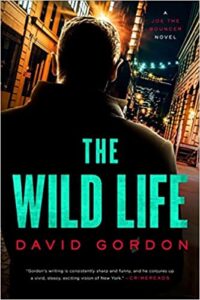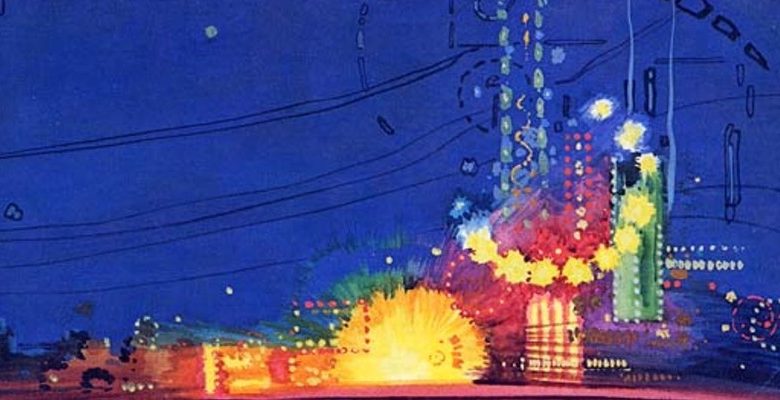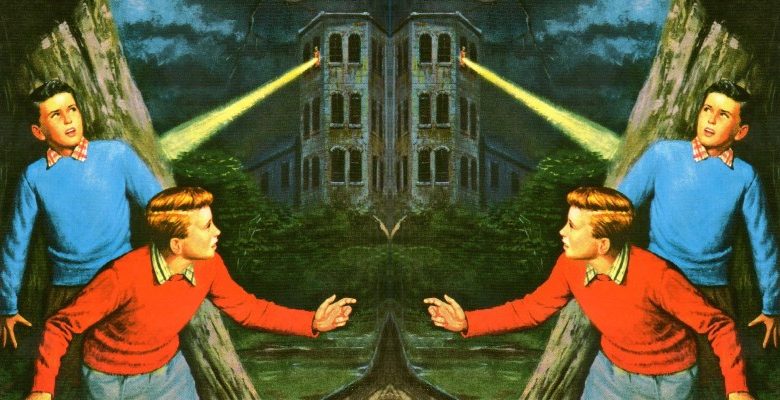[ad_1]
I am a lifelong lover and obsessive consumer of all kinds of genre fiction in many mediums, from the original Star Trek series to yakuza and samurai films, from JG Ballard’s sci-fi nightmares to PG Wodehouse’s sparkling farces. But if there is one genre form that attains a kind of Platonic perfection, the genre of genres, I believe it has to be the mystery, specifically the detective story.
In The Wild Life, the newest novel in my Bouncer series, Joe Brody, a strip-club bouncer who sidelines as a fixer for New York’s mob bosses, is given a new kind of assignment: detective. Sort of. A number of the city’s most sought after sex workers have disappeared and the bosses fear the worst – a serial killer in their midst. They ask Joe to investigate, forcing him to become a strange new hybrid, professional criminal turned amateur private eye, in a book that attempts to cross the heist novel with a detective story.
This is actually my third try at a detective narrative of sorts and each time I’ve taken a different approach. In The Serialist, a pulp writer is hired to ghost the memoir of a death row killer. In Mystery Girl, a desperate husband, hoping to win back his wife, takes the only job he can get – “assistant” to a possibly deranged amateur detective. Nevertheless, these variations on the form are mere crumbs at the feast, drops in the overflowing well that is detective fiction. Despite remaining in many ways essentially the same since Dupin and Holmes, I believe that a large part of the mystery’s continued relevance, eternal popularity and seemingly limitless expansion is its ideal malleability as a form, retaining its essential nature while being twisted into new shapes over the decades.
The Golden Age of mysteries was also the primeval age of amateurs, with a whole range of strange birds emerging. Queen of the era, of course, is Agatha Christie, who not only gave us one of the classic private eyes in Poirot, but also inspired a cozy crime wave with Miss Marple. The kindly old spinster with a mind sharp as a razor and nerves of steel helped spawn a thousand eccentrics in quaint villages whose residents have an alarming propensity to knock each other off. It was also a fertile time for aristocratic gentlemen sleuths who tracked murderers for amusement, like Dorothy L Sayers’s Lord Peter Whimsey, or Ngaio Marsh’s Inspector Allyn, who set the prototype for the posh Inspector Lynley books by Elizabeth George or PD James’s poet-detective Adam Dalgliesh. And then there’s Morse, the grumpiest, snobbiest intellectual detective of all, in the most highbrow of settings, Oxford. But maybe the oddest duck in the pond is G.K. Chesterton’s Father Brown, a Catholic country priest who not only catches criminals, he saves their souls and convinces them to confess. This became its own mini-sub-genre, with Harry Kemelman’s Rabbi series, and now Sister Boniface on the BBC.
Since humanity can always be counted on to prey on one another, the figure of the detective seems to translate into every language and nation, taking on the local coloration wherever it migrates. The Martin Beck series, featuring a dour detective in a cold world, led to the mega-brand of Nordic Noir, while Detective Zen in Rome and Inspector Montalbano in Sicily need to not only identify killers but be cunning enough to deal with bureaucracy, corruption and the Mafia, as well lots of espresso and fresh seafood. From Martin Cruz Smith’s Moscow in Gorky Park, to The Number 1 Ladies Detective Agency in Botswana, to John D. MacDonald’s boat moored down in Florida, each place breeds the crime and the detective that it deserves.
Even more remarkable perhaps, is the way this literary figure has managed to travel back through time. Some of the most unique mysteries take place in historical settings, from Umberto Eco’s world-shaking The Name of Rose, where a medieval monk catches a killer, to one of my pandemic finds – The Murdoch Mysteries, where a turn-of-the-last-century Toronto detective crosses paths with Edison, Houdini and Tesla, not to mention Conan Doyle himself, as the science of modern forensics emerges. And speaking of the original consulting detective, The Seven Percent Solution, in which Holmes is pushed by codependent Watson to seek help for his cocaine addiction by consulting fellow genius Sigmund Freud ranks high on the list of ideas I wish I’d thought of myself.
So then, why, other than the ubiquity of human frailty, is the detective such an adaptable and applicable figure? One reason is his or her special role in society. As long as they are following some sort of logical trail of clues, the detective can go anywhere, talk to anyone, penetrate all sectors of society, from the highest realms of wealth and power to the lowest ditches and dives. Because of this, mysteries, despite their often wildly imagined mayhem and obscure plot points, can offer a deeply revealing and immersive portrait of a society at a given time. Whether it is Easy Rawlins in midcentury South Central LA, Joe Leaphorn in the Navajo Tribal Police, Sheriff Longmire in Wyoming or Detective Inspector Jimmy Perez on the Shetland Islands, these characters become guides to the worlds they inhabit, allowing us to see how a vast cross-section of people talk, dress, eat, sleep, work, live and die.
But while being, of necessity, the ultimate insider, the detective also stands apart, at the edge of the culture, a liminal figure, whether that is the eccentric, even anti-social genius archetype created by Poe and exemplified by Holmes, who continues to return in a million guises, from Nero Wolfe to Adrian Monk to Doctor House, or the hardboiled, heroic loners of Hammett, Ross Macdonald and company. Their unique status allows them to find their way to the dark heart of the matter while also seeing, and judging, with an outsider’s eyes. At their best, detective novels transmit a profound sense of a society’s deep issues as well as a real feeling for its texture, whether or not the author even set out to address those subjects directly. There is much to learn about race and corruption in Los Angeles from Raymond Chandler. And Simenon not only gives readers a vivid tour of Paris, he provides a true Existentialist hero in Inspector Maigret.
Some authors seize on this aspect of detective fiction to plunge deeply into social issues. For example, Chester Himes’s Harlem Detective series, which is both hilarious and excoriating in its exacting and empathetic descriptions of life in the ghetto combined with a critique of the society that created it. Ruth Rendell, in her Inspector Wexford books, explores issues from environmental activism to child abuse and the exploitation of immigrants. I often think, looking back, that good mysteries, intentionally or not, tell as much or more about the worlds they are set in than mainstream “literary” novels.
Considered as a narrative form, the mystery – with its classic structure of initial crime followed by a series of clues leading (after as many red herrings, detours, dangers or delights as the author desires along the way) to a revelation and resolution – is such a powerful engine of suspense and forward story-telling momentum, and provides such a strong structure for incident and character development, that it is also ideal for fusing with other stories and tropes, like a love story or buddy adventure. One of the boldest and most influential of these genre fusions was the film Blade Runner, which combined PK Dick’s sci-fi novel Do Androids Dream of Electric Sheep? with noir-film style and a classic hardboiled main character to create not just a great film but a whole aesthetic: future noir. I also think of Philip Kerr’s masterly Bernie Gunther novels, which meld old school detective fiction with WWII era espionage to take us on an often hellish tour of Nazi Berlin. And then of course there is The Big Lebowski, where the Coen Brothers were inspired to mix a Chandleresque California detective tale with the highs of stoner comedy.
The final aspect I’d like to mention is the nerdiest – but then again I teach writing and literature when not committing and solving crimes on paper – and that is sheer formal perfection. Like the sonnet or the haiku, the mystery has an inherent beauty and power that never seems to fade or exhaust itself. Do we humble practitioners think we will out-do Conan Doyle or Dashiell Hammett? No more than modern poets think their love sonnet will top Shakespeare’s. But that’s not the point. On the contrary, the wonder of Shakespeare’s achievement seems to draw and inspire other poets again and again. In a similar way, many talented and original novelists have re-conceived this genre and used it to create strikingly original work. Leonardo Sciasca’s novels, like The Day of the Owl and To Each His Own, are spare, beautifully written books in which the maze of trying to solve a crime in Sicily feels almost like post-modern art, a nouveau roman. In Distant Star, Roberto Bolaño spins a high-literary tale about an exiled Chilean poet enlisted in the hunt for a war criminal who is also a terrible poet. And in The Ruined Map, Kobo Abe weaves a detective story that leads us into a surreal, dream-like world. Books like these and others push back the edges of the form, turning the old-fashioned mystery into avant-garde literature. It is this continuous resonance, this sense of limitless possibility, that continues to attract both readers and writers. And then, of course, there is the simple fact that it that feels like a perfect metaphor for writing, reading and even life itself: a mystery in which we go in search of the truth, meeting fascinating characters, love and danger along the way. It is the shape of the perfect story.
***

[ad_2]






